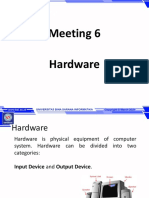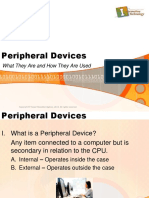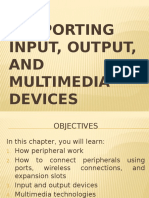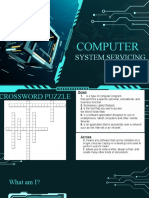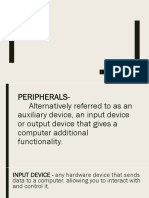0% found this document useful (0 votes)
30 views7 pagesPeripheral
Peripheral devices are external hardware components that enhance a computer's functionality by assisting in input, output, and storage tasks. They are categorized into input devices, output devices, and storage devices, each serving distinct roles in user interaction and data management. As technology advances, these devices are becoming more sophisticated and integrated with smart technologies.
Uploaded by
poojarichahelCopyright
© © All Rights Reserved
We take content rights seriously. If you suspect this is your content, claim it here.
Available Formats
Download as PDF, TXT or read online on Scribd
0% found this document useful (0 votes)
30 views7 pagesPeripheral
Peripheral devices are external hardware components that enhance a computer's functionality by assisting in input, output, and storage tasks. They are categorized into input devices, output devices, and storage devices, each serving distinct roles in user interaction and data management. As technology advances, these devices are becoming more sophisticated and integrated with smart technologies.
Uploaded by
poojarichahelCopyright
© © All Rights Reserved
We take content rights seriously. If you suspect this is your content, claim it here.
Available Formats
Download as PDF, TXT or read online on Scribd
/ 7























